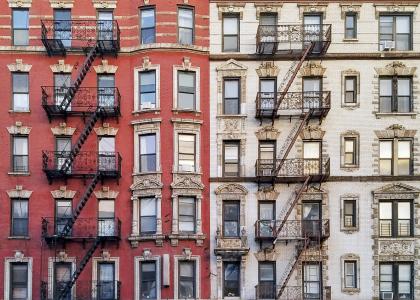As Congress works on trillions of dollars in investments this month to help people recover from the pandemic and to transition to a clean energy economy, it should not overlook a critical but often neglected area: affordable rental housing.
We’re talking in particular about multifamily buildings that tend to be older and less energy efficient, often burdening residents with high utility bills. By investing in energy-saving upgrades for affordable rentals, Congress and the Biden administration can reduce energy bills and climate-warming emissions, create jobs, and improve quality of life for millions of the Americans who need it most.
We should seize this opportunity to make the pandemic recovery more equitable by funding the GREAHT (Green, Resilient, Efficient, and Affordable Homes for Tenants) proposal as part of the upcoming reconciliation bill. This plan, developed by ACEEE and the National Housing Trust (NHT), calls for up to $75 billion in federal investment over 10 years to fund energy efficiency upgrades as well as health and safety improvements, electrification, solar power, and better resilience in low and moderate-income multifamily housing. The current proposal includes two components: (1) grants through the Department of Housing and Urban Development (HUD) to retrofit HUD-assisted housing and (2) funding to Community Development Financial Institutions to help market rate affordable housing make upgrades while retaining affordability.
The proposal aligns with President Biden’s American Jobs Plan, which seeks to “[m]ake housing more energy efficient and resilient for millions of families… through a historic investment in building upgrades.” And it was included in major housing infrastructure legislation introduced by House Financial Services Committee Chairwoman Maxine Waters last month.
A recent ACEEE analysis estimates that with full funding GREAHT could avoid carbon emissions equivalent to 40 million cars being driven for a year and create tens of thousands of jobs for several years.
The proposal could retrofit up to 8 million affordable housing units by giving landlords grants and loans to improve their buildings’ energy efficiency, water efficiency, and resilience. It would include an array of improvements that make homes healthier and more comfortable. The investments could include measures such as insulation, better windows, updated appliances, and reflective roofing. A switch to electric heat pumps and heat pump water heaters would get added funding. Also eligible: mold mitigation, moisture control, floodproofing, solar panels and battery storage.
Improving quality of life for those who need it most
The GREAHT proposal would support households that may not have the money or authority to retrofit or renovate their own homes. It provides government funding to building owners who might not otherwise make the efficiency improvements needed to improve tenant safety and comfort. It will make housing more affordable for residents by lowering energy bills.
By contrast, many existing programs aimed at increasing building efficiency give homeowners tax rebates or other incentives that encourage them to invest some of their own money in efficiency upgrades. While these efficiency gains are important, they sometimes don’t help people in the greatest need.
Multifamily residents often bear disproportionally high energy burdens. Our research has shown they spend a larger share of their incomes on energy bills than do occupants of single-family homes, making it more difficult for them to afford necessities such as food or to save money for the future. Using efficiency upgrades to reduce energy bills while improving the quality of multifamily housing is crucial.
Congress should include the GREAHT proposal as part of its major infrastructure and recovery investments. The nation’s renters deserve resilient affordable housing with healthy indoor air and reduced climate-changing emissions. Now is the time.






